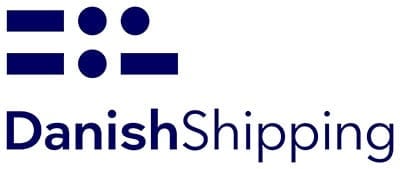Danske Rederier, the Danish Shipowners’ Association, is an organization that represents the varied interests of Danish shipping businesses. The group acts on behalf of shipping businesses, serving as the industry’s advocate in a number of settings, in order to help Demark maintain its strength and position in the realm of global shipping.
Danske Rederier serves as an advisor to government delegations, seeking the influence of politicians, authorities, and various organizations, at all levels, to create the best possible industry conditions for its members. The group likewise collaborates with a number of international shipping groups in Europe and throughout the world.
Speaking for and working toward a unified industry, Danske Rederier seeks to resolve pressing concerns such as tax and framework conditions, education and training, climate and environmental issues, renewable energy and the offshore sector, as well as safety at sea, among others.
Anne Steffensen, Director General of Danske Rederier, gave Bridges an inside look at the organization and its role in the Danish shipping industry, as well as its relationship with Japan.
Bridges: Could you provide us some insight into the current state and strength of the Danish shipping industry?
Anne Steffensen: The Danish shipping industry is doing very well; 2021 and 2022 were record years, while 2023 shaped up to be a more “normal” year for the industry, after the unprecedented rise in freight rates during the Pandemic years of 2021 and 2022.
Denmark is among the 10 largest shipping nations in the world (by operated tonnage). On a whole, the Danish maritime cluster employs around 100,000 people in Denmark. And shipping is Denmark’s largest export industry.
Dansk Rederier wholeheartedly supports the goal of climate neutral shipping by 2050.
Anne Steffensen, Director General of Danske Rederier
Aside from highly competent, innovative shipping companies and a well-educated work force, one of the key factors behind the success of the Danish shipping industry is its framework. We have good framework conditions that allow Danish companies to compete globally. Political support and stability are very important.
What is the outlook for the remainder of 2024, and can you already identify future trends?
At the beginning of 2024, the volatile global security situation was a concern, and remains as such. Safe conditions for shipping in the Red Sea must be reestablished, as quickly as possible. Attacks on shipping lanes and the freedom of navigation endanger the lives of seafarers and impact the world economy negatively.
As for the future of shipping, it is green—and the Danish shipping industry is at the forefront of the green transition of shipping. It is vital for the Danish shipping industry and maritime sector to be part of the solution and provide the green products and services that the world demands —and will increasingly continue to demand.
What are some of the key green shipping and carbon neutrality goals? How is Denmark working to advance and meet these goals?
Dansk Rederier wholeheartedly supports the goal of climate neutral shipping by 2050. In fact, we have worked very hard, and continue to do so, to support the efforts of the Danish government and the Danish Maritime Authority in the International Maritime Organization (IMO) to secure the historic agreement about climate neutral shipping, made in the summer of 2023.
Danish shipping companies are among the frontrunners in the green transition of global shipping. Last year, A.P. Moller-Mærsk received the world’s first container ship, Laura Mærsk, which can sail on green e-methanol. Additionally, several ferries are now battery fueled. And this year, Danish company ESVAGT will take possession of the world’s first Service Operation Vessel which can sail on green fuels alone. In fact, 80 % of the total tonnage of ships that have been ordered by Danish companies are vessels which can sail on green fuels.
The Danish shipping industry must seize the opportunity and make green solutions and good business go hand in hand.
Japan is an important partner for Danish shipping. We share fundamental values. We have a similar business culture and a mutual recognition that free trade and free market access should be cornerstones of the world economy.
Could you tell us more about the Denmark-Japan collaboration in the shipping industry? What are some of the key aspects of this dynamic relationship?
Japan is an important partner for Danish shipping. We share fundamental values. We have a similar business culture and a mutual recognition that free trade and free market access should be cornerstones of the world economy. And Japan is recognized for producing high-quality products, ranging from cars and electronics to ships and many, many more. In other words, Japan is an attractive place to do business.
This also applies to the shipping industry. Japanese shipyards have built 180 ships that are currently part of the Danish merchant fleet (S&P Maritime Portal, January 2024). Danish ships made 863 calls in Japanese ports in 2022 and had total exports to Japan of 7.1 billion Danish Kroner (approximately ¥ 152 billion). And obviously, a lot of Japanese products are transported on Danish-owned or Danish-operated ships.
Danish and Japanese authorities, as well as shipowners, are represented in various shipping forums and international organizations. In the coming years, the IMO has the important task of agreeing upon the international regulatory measures necessary to underpin the ambitious goal of climate neutral shipping by 2050. Japan, Denmark, and other great shipping nations must work together to make climate neutral shipping a reality.




